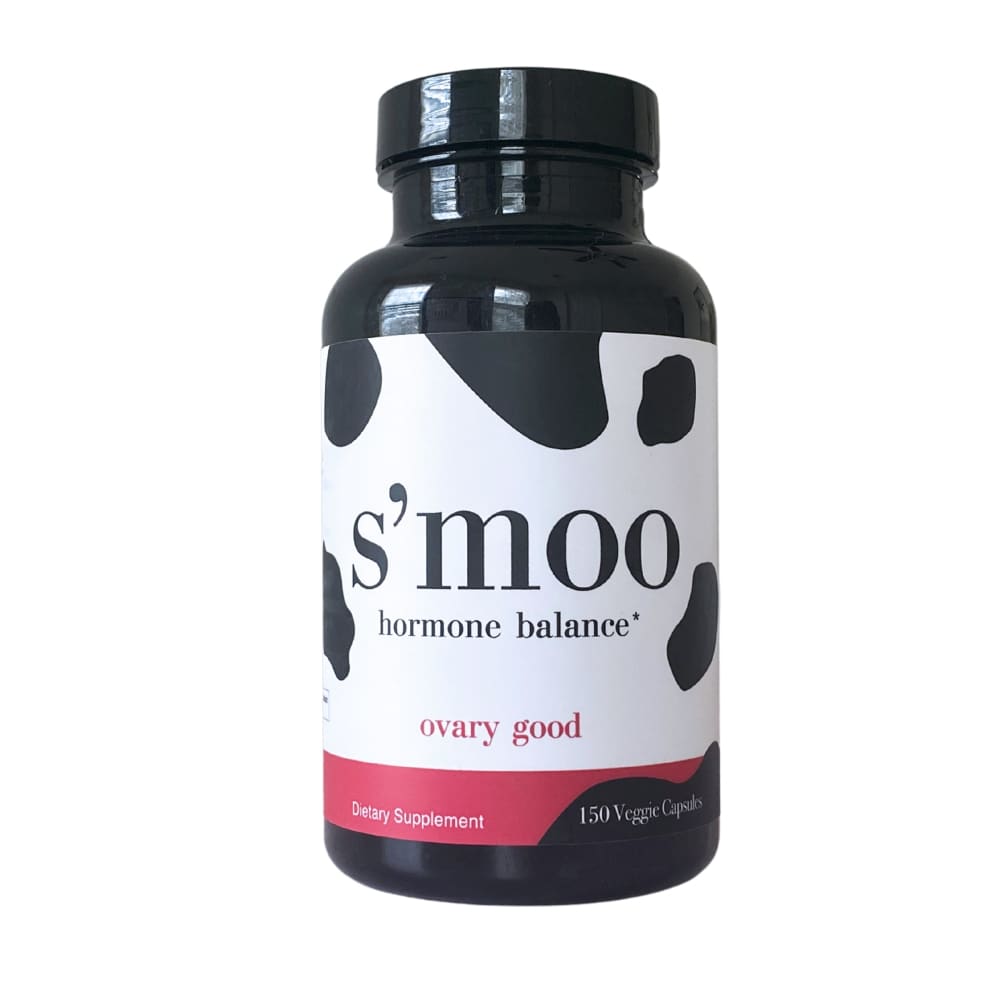How Knowing Your LH Levels Can Improve Your Chances of Getting Pregnant
Your high school Sex Ed teacher instilled an irrational fear of pregnancy in you that lasted well into adulthood. If you flirt with a hot guy at a party, you’ll get pregnant. Cleavage? Straight to the maternity ward.
Now that you’re ready for a baby, you can see getting pregnant isn’t that simple. Your fertility is determined by many moving parts. Factors like hormones, egg quality, and the day of the month all matter when you’re trying to get pregnant. Thanks for the heads up, Coach Carr.
If you’re just beginning your TTC (trying to conceive) journey, it’s easy to get overwhelmed by all the factors. How do you know if you’re fertile?
A good place to start is knowing if you’re ovulating. Today we’re discussing luteinizing hormone (LH), which plays a major role in ovulation.
Discover what LH does and how knowing your levels can improve your chances of getting pregnant.

The Role of Luteinizing Hormone in Your Menstrual Cycle
Your menstrual cycle is split into two parts: the follicular and luteal phases.
The follicular phase begins when you start your period. The first day of bleeding is day one of your cycle.
During the follicular phase, your ovarian follicles prepare the egg to be released during ovulation. At the end of the follicular phase, you move into your fertile window.
The fertile window lasts for about five days leading up to ovulation through the day after ovulation. This is the best time to have sex if you’re trying to get pregnant.
During your fertile window, estrogen levels rise to support ovulation. An estrogen peak triggers the pituitary gland to release luteinizing hormone.
A rapid increase in luteinizing hormone, known as an LH surge, triggers ovulation. This is when the egg follicle ruptures and releases the egg to be fertilized.[1]
The luteal phase begins after ovulation. If the egg is fertilized, your body continues making hormones to support pregnancy. If it isn’t, you get a period.
Tracking an LH Surge to Confirm Ovulation
The best way to confirm ovulation is to check for an LH surge. To do this, measure your LH levels over a period of several days. Seeing an LH surge indicates successful ovulation.
You can measure LH through blood or urine testing. To have blood LH levels tested, you will need to visit a lab several days in a row. Urine LH levels are accurate too, and you can check those at home with an ovulation predictor kit.
Other Ways to Track Ovulation
Collecting LH levels is a good way to confirm ovulation, but did you know you can monitor for signs of ovulation yourself? Let’s get familiar with other ways to tell if you’re ovulating.
Once you have an idea of your fertile window, you can monitor your body for signs of ovulation. Some ovulation signs you can track at home include:
-
Basal body temperature (BBT). Check your temperature at the same time every day. A BBT spike (0.5-1 degree increase) usually occurs the day after ovulation. Seeing a BBT spike can indicate you ovulated.
-
Cervical mucus. During ovulation, cervical mucus will be thin and stretchy like a raw egg white.
- Rapid urine luteinizing hormone (LH). You can check your urine LH levels using an at-home ovulation predictor kit. The kit will have instructions to guide you to accurately measure and interpret the results.
After you ovulate, your progesterone starts to rise. Symptoms of elevated progesterone like breast tenderness and mood swings may be a sign that you ovulated.
If don’t ovulate in a cycle, don’t worry – it’s actually very common. Approximately 1 in 10 women have an anovulatory cycle at some point in their lives.[2]
Collecting this type of data helps when you see your OBGYN or fertility specialist. Your healthcare provider will help you analyze your results to decide what else you can be doing to get pregnant.
When to Test LH Levels
Ovulation occurs 12-14 days before your next menstrual period. The exact timing varies from person to person – and even from cycle to cycle for the same person.
We recommend using a calendar or app to track your menstrual cycle. To estimate ovulation, mark the date of your next expected period. Subtract 14 days from that date to get your estimated ovulation date.
The best time to measure LH levels is during your fertile window. You’re fertile for about 5 days before ovulation through the day after. If you’re testing your urine at home, keep checking LH levels until you detect a surge. This is a rapid increase in LH levels.
What Are Normal LH Levels?
It’s important to know that LH levels vary by person and fluctuate throughout your cycle. There’s no perfect LH level you to try to achieve. Instead, follow your trends to interpret the information your body is giving you.
For premenopausal women, average LH levels are 5-25 IU/L.[3] They’ll get even higher before ovulation. After ovulation, they’ll drop off. If you become pregnant in a cycle, your LH levels will be low.
After menopause, LH levels increase, averaging 14.2- 52.3 IU/L.[3]
Most types of birth control prevent you from ovulating, so tracking LH levels will not give you information about your fertility. You may need to stop hormone therapy or birth control for up to four weeks before getting your LH levels checked.
Here’s an idea of typical LH levels[4] at each phase of the menstrual cycle:
Follicular phase: 1.8-12.5 IU/L
Peak menstruation: 8.7-76.3 IU/L
Luteal phase: 0.5-16.9 IU/L
Pregnant: below 1.5 IU/L
Can You Measure LH to Test for Pregnancy?
At-home pregnancy tests detect the presence of human chorionic gonadotropin (hCG) in your urine.
Luteinizing hormone and hCG have a similar chemical makeup in your body.
Sometimes ovulation predictor tests misinterpret hCG for LH. If you’re approaching your next menstrual period and have high LH levels, it could be time to take a pregnancy test.
It’s not safe to use LH testing to confirm pregnancy. If you suspect you’re pregnant, take a pregnancy test or talk to your doctor about coming in for confirmation.
Reasons for Abnormal LH Levels
The most effective way to measure LH is to check it for several days during your fertile window each month. This tells you if and when you’re ovulating in a cycle.
Although it’s difficult to pin down a “normal” LH level, you can have abnormally high or low LH levels for different reasons.
Higher Than Normal LH Levels
For premenopausal women, high LH levels [5] can be a sign that you’re not ovulating. If you’re older, it can be a sign that you’re going through menopause.
People can have higher than normal LH levels due to underlying conditions like:
-
Polycystic Ovary Syndrome (PCOS) — women with PCOS often have high LH levels. Follicular stimulating hormone (FSH) and LH levels should be similar for a healthy egg to develop. It’s common for women with PCOS to have abnormal LH-to-FSH ratios. [6]
-
Turner syndrome — a genetic disorder that causes small, poorly functioning ovaries.
- Ovarian hypofunction — when the ovaries don’t produce enough hormones.
Lower Than Normal LH Levels:
You can have lower than normal [7] LH levels because of:
-
Kallmann syndrome — a genetic disorder that delays puberty.
-
Hypopituitarism — the pituitary gland is responsible for making LH. An abnormally functioning pituitary gland may cause decreased LH production.
- Being underweight — excessive exercise habits and disordered eating can cause hormonal disruptions.
Having an abnormally high or low LH doesn’t necessarily mean you can’t get pregnant. It’s a signal to take a closer look at your fertility. Discuss your test results with your OBGYN or fertility specialist to determine the next step.
If you want to balance your hormones naturally, check out S’moo Ovary Good powder. The hormone-balancing blend helps women with underlying conditions like PCOS get regular cycles. Ovary Good also helps women with PCOS get pregnant.* The herbal blend encourages your hormones to work together at each step of the menstrual cycle.
What to Do With LH Levels
Contrary to what your Sex Ed teacher might’ve taught you, there’s more to getting pregnant than poking a hole in a condom. If you’re trying for a baby, you should be having sex on the days you’re most fertile.
Tracking your LH levels will help you figure out the exact days. When you see an LH surge, you know you’re ovulating – it’s time to put on that busty top and get busy.
Ready to learn more about your hormones and TTC? Join the Smoo Babe Community today. It’s a supportive community just for women with hormone challenges. We share tips on all things PCOS, fertility, endometriosis, and more. See you there, babe!
*Claims are based on S’moo customer success stories. Everyone’s body is different, so talk to your doctor about whether daily supplements are right for you. This is not medical advice.
Sources:
- Luteinizing hormone and its dilemma in ovulation induction
- Anovulation
- Luteinizing hormone (LH) blood test
- Luteinizing Hormone (LH)
- Luteinizing Hormone (LH) Levels Test
- Polycystic Ovarian Syndrome (PCOS) Tests for PCOS – How to Make the Diagnosis?
- Luteinizing hormone deficiency
By Alexa Davidson, MSN, RN
Alexa is a registered nurse and freelance health writer. As a nurse, she spent over a decade taking care of sick babies in neonatal and pediatric cardiac intensive care units.
After earning a master’s degree in nursing education, Alexa began teaching associate degree nursing students. Now she’s teaching everyday readers about their health through copywriting.
Alexa believes health information should be accessible to anyone. She’s focused on writing approachable content that empowers women to take control of their reproductive health.
As an emerging FemTech copywriter, Alexa’s work is featured on product blogs like the Inito Fertility Monitor. She’s also a nurse writer and subject matter expert at NurseJournal, Working Nurse Magazine, and Indeed.
When she’s not writing, Alexa is probably in the kitchen. Her specialty is making healthy versions of comfort foods. Black bean brownies, anyone?










